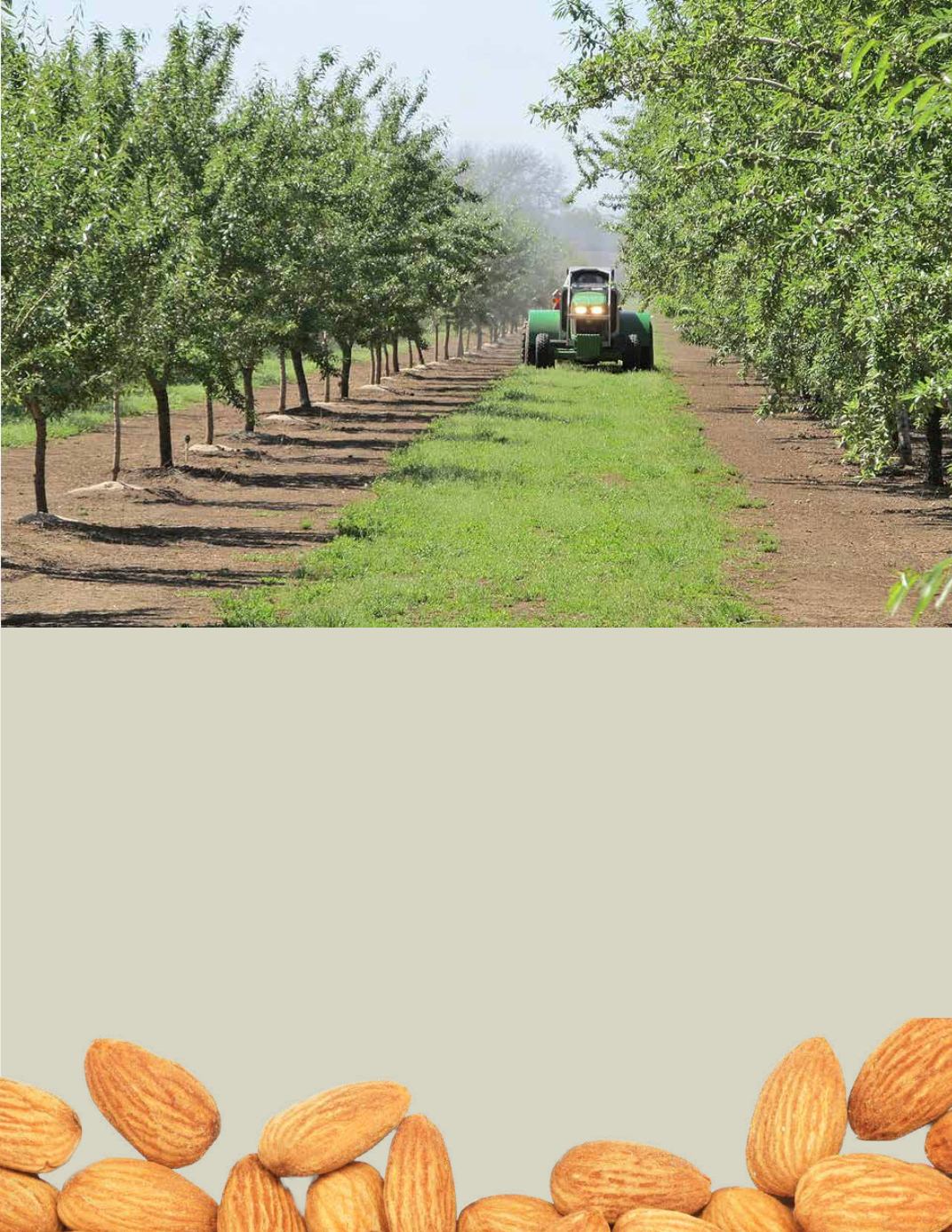
Speaking of almonds, there are 9 million acres of farmland in California and almonds account for 12 percent of that total while only
using 8 percent of the water currently used for agriculture. Almond crops produce more than just the kernels humans eat, which
provide an efficient source of a heart-healthy, plant-based protein. The almond crop also produces hulls and shells that provide feed
and bedding for livestock animals. Almonds rank No. 1 in California for food exports out of the state, with North America consuming
four times more almonds than any other country. Our industry is a global driver of $11 billion in economic activity for California!
In the last 20 years, California almond growers have reduced the amount of water required to grow a pound of almonds by 33
percent. Nearly 70 percent of almond growers use micro-irrigation systems and more than 80 percent use demand-based irrigation
scheduling. No one in the world can produce a high-quality almond as efficiently as we can in California!
In times of crisis, there are people who look for someone to blame. Almonds were the first target. Through sharing a few facts
about our water stewardship, the media tide has turned to more balanced reporting. As the weather continues to warm into
the summer, I expect agriculture will continue to field questions from our urban neighbors about water. Rest assured that your
cooperative is committed to collaborating with our industry peers, water and environmental experts, consumer groups, regulatory
bodies, and policy makers to establish a water policy that makes sense for all Californians – rural and urban, Central Valley and
coastal, producers and consumers.


